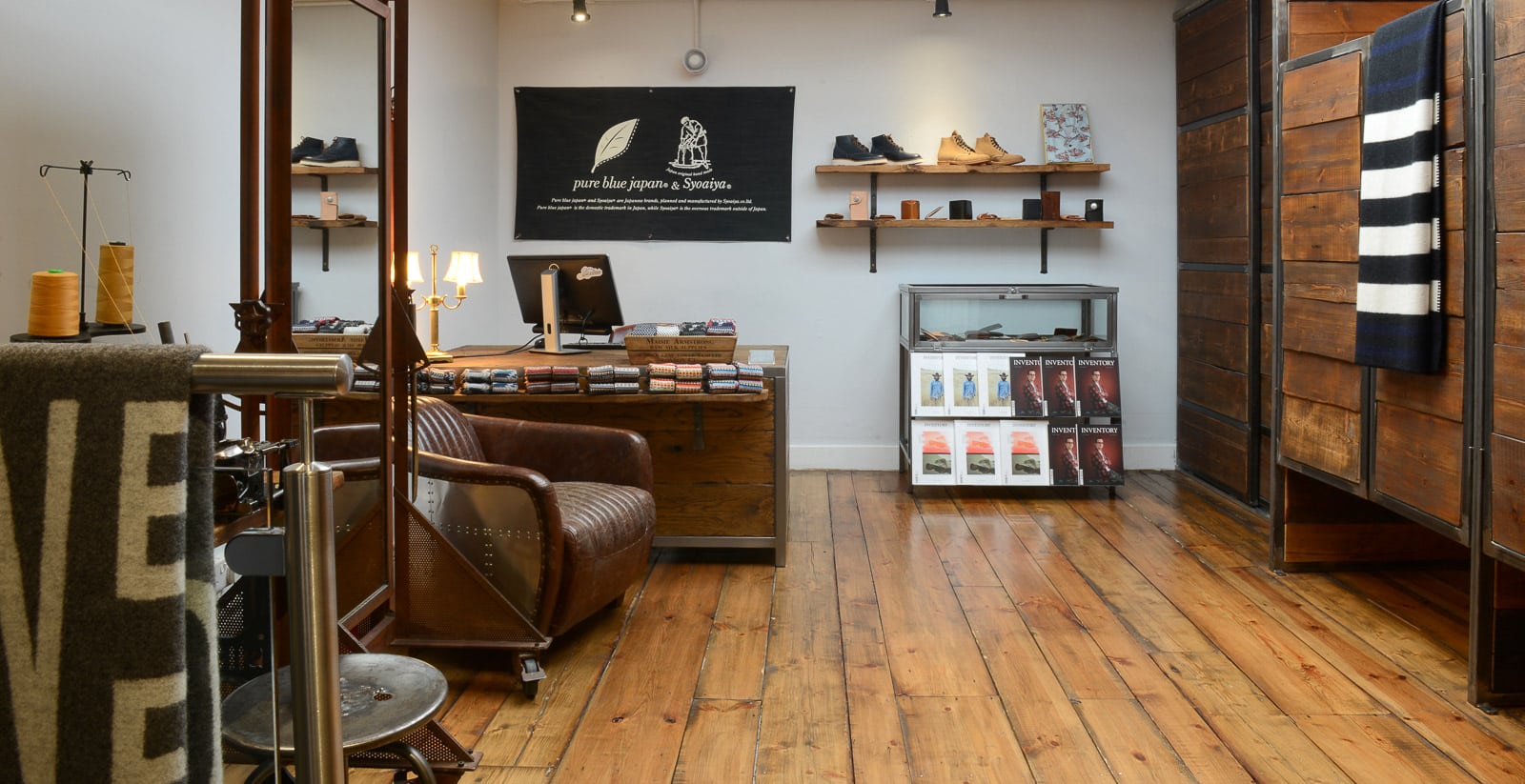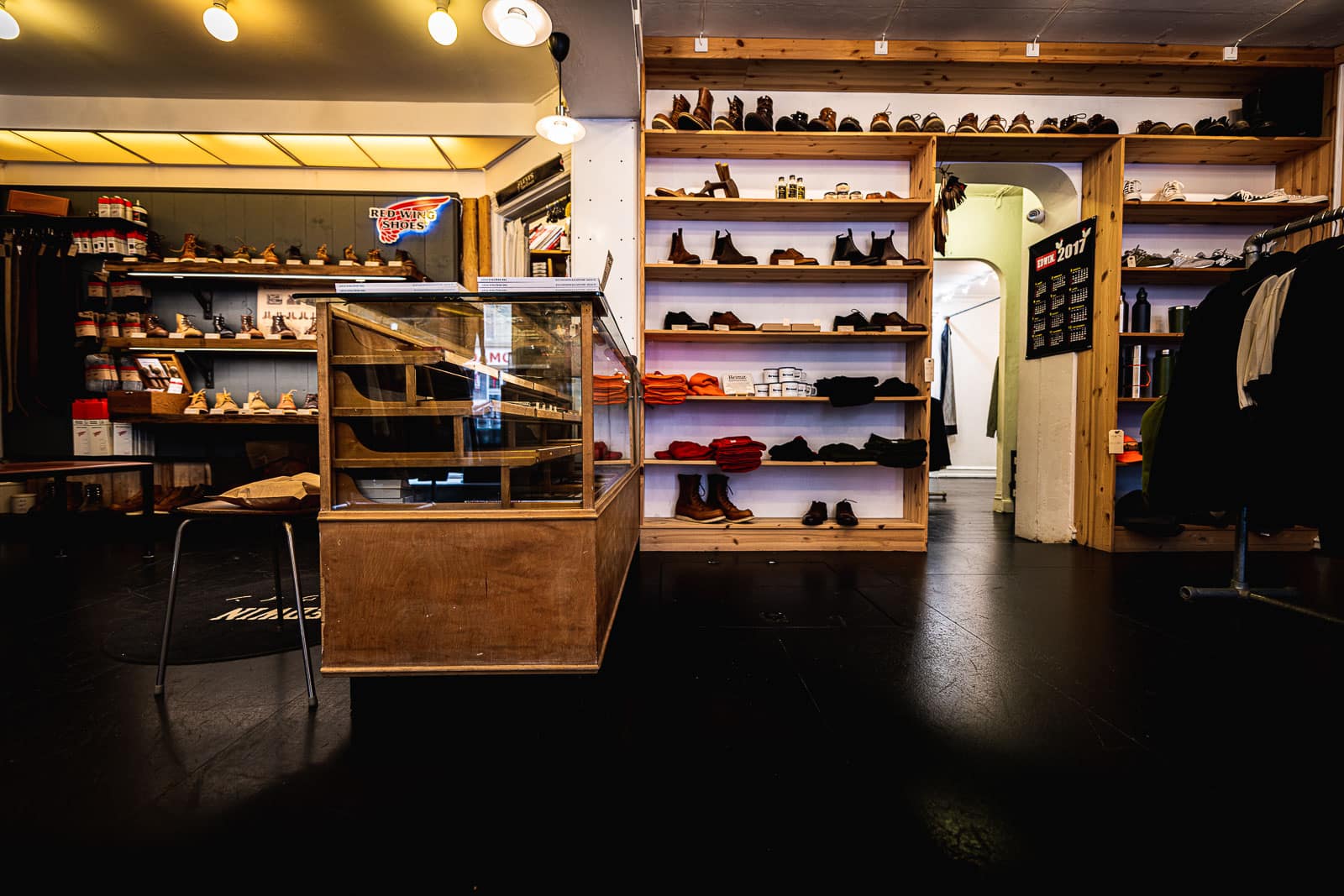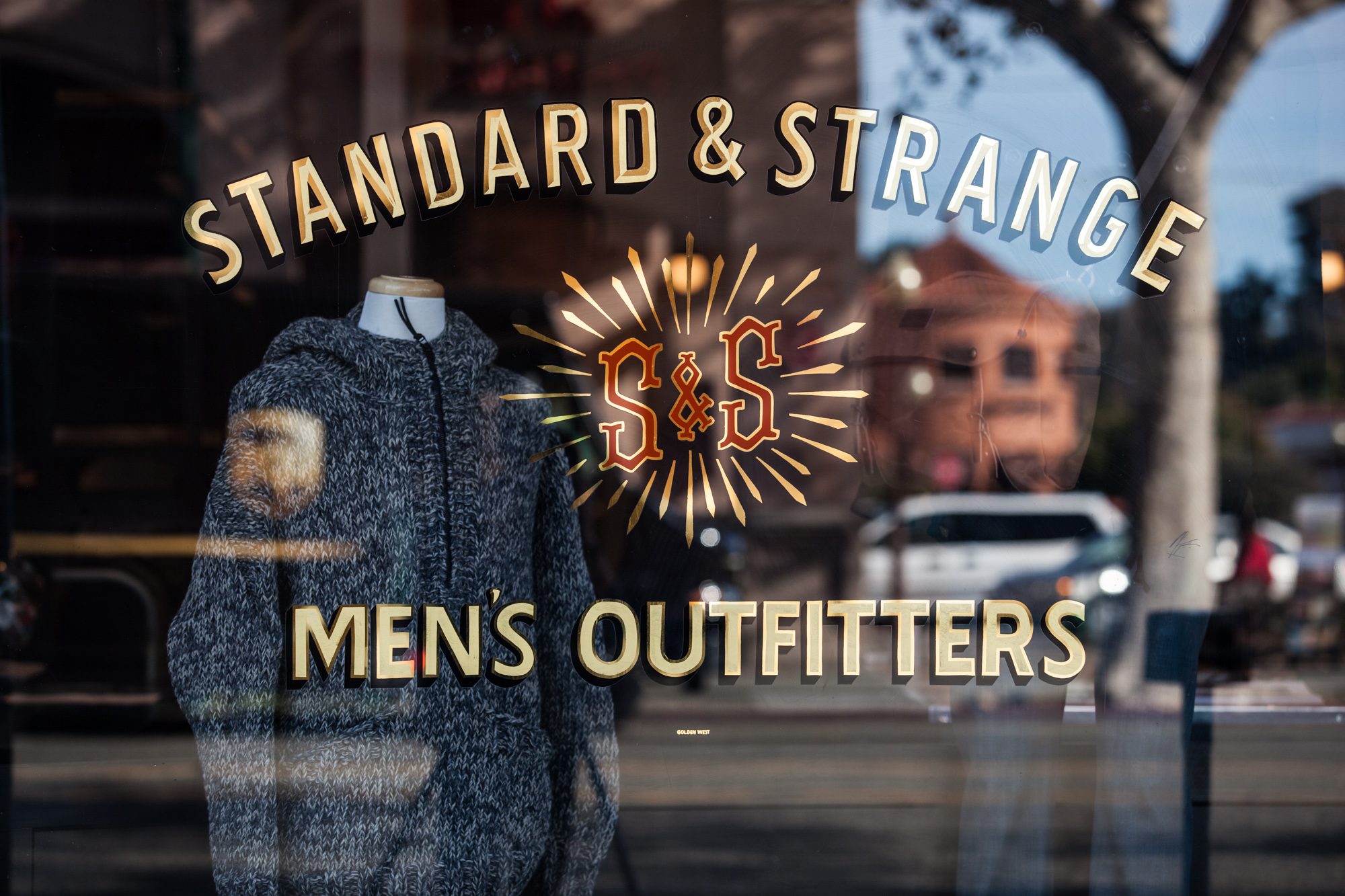…and How Stores Like Rivet and Hide’s Online and Physical Shopfronts Complement the Customer Experience
In this second episode of our series about the Future of Retail, I’ll talk about the growing role of e-commerce and how retailers are using it along with bricks-and-mortar stores to augment their sales and shopping experience.
I touched lightly upon the role e-commerce plays when it comes to mono- vs multi-branded stores in the first episode of the series. With it is playing such a significant role in today’s retail experience, many attribute it as a reason for the decline of physical stores. I delve deeper into what the ‘rise of online’ means for retailers, and how they can—and already are—using a digital shopfront to complement their supplement their traditional sales strategies.
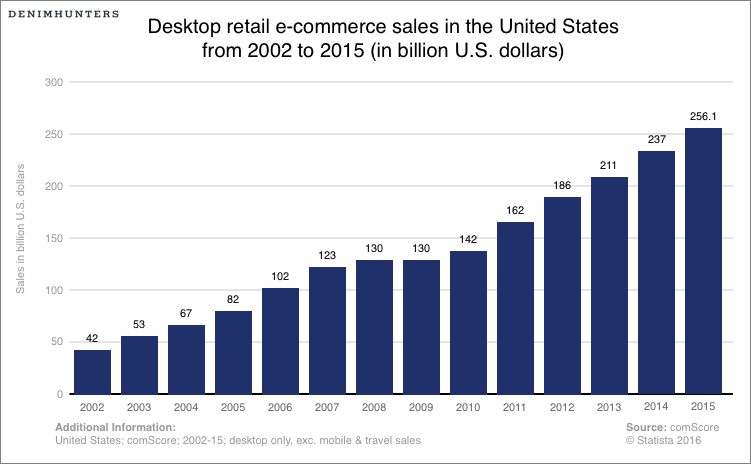
Online Stores Reach A Wider Audience
Think of your local denim store. If you’re like me, and you visit it quite often, you’ll start seeing the same faces there again and again. While this repeat custom from locals can be attributed to a well-designed shopping experience, one of the fundamental limitations of physical stores is that they have a limited sphere of influence.
[hide_from accesslevel=”free”]
… to read the rest of the article, log in with your FREE account.
[login_form redirect=”https://denimhunters.com/online-vs-in-store-customer-experience/”]
Don’t have a FREE account yet? Sign up here!
[password_recovery_link text=”Lost Password? Click here to reset your password.”]
[logout_link text=”Logout”]
[/hide_from]
[show_to accesslevel=”free”]
Essentially, their location dictates that the majority of their footfall will come from the local population. In fact, one study shows that, on average, consumers travel 17 minutes to reach a local business. In other words, your neighbourhood store will primarily serve customers who live within that radius.

Take into consideration if your local denim store specialises in denim of the highest quality and rare brands, like Rivet and Hide, whose primary clientele is niche even on the denim scene. Having a niche audience demographic means they’ll never expect the footfall or sales volumes that a more generalised, high street store would. Danny Hodgson, founder and driving force behind Rivet and Hide would be the first to admit it:
We sell the best made jeans the world has to offer as well as boots, jackets, shirts and wallets,” he tells me. “This is pretty niche and does not have mass market appeal.”
For Danny, having a website from the onset was not only a sensible decision, it was arguably one of the only ways to reach out to his customer base: one that was still very much in its infancy in London.
At the beginning, I could not gauge how many people would really appreciate this. Back in 2012, when I launched Rivet and Hide, I did it from my small London flat, and I was soon getting visits to try on the clothes there. That lead to the workshop on a by appointment basis where the number of visits increased significantly.”
With such a focused target audience—perhaps no more than a hundred or so individuals—strewn across Europe, it is undeniable that the website has played an undeniable role in drawing these first customers to Rivet and Hide.
Take Products to Market Quicker Online
With rents on the increase and retail spaces at a premium, setting up a brick-and-mortar store can be a costly venture for businesses in their infancy. Setting up an online storefront has never been easier, or more affordable. In fact, it is the first port of call that most businesses turn to.
For less than $30 a month with services like Shopify or StudioPress Sites, an artisan, jeans maker or leatherworker can set up their own online storefront from modifiable templates that all e-commerce platforms offer, upload their product catalogue, including pictures and all the information relating to each product, and start selling in a matter of hours.
By the way, you can try Shopify for free in 14 days here!
Taking products to market online first means that small businesses can forgo the traditional model of selling to merchants at wholesale. Instead, they can sell directly to the customer and reap all of the benefits that entail. For a start, selling directly at retail prices means that a small business can reap the maximum profits for each product they sell. They retain greater control over how their brand and products are presented to consumers and, with most e-commerce sites offering integrated stock control solutions, only create enough product as there is demand for.
The average denimhead is not only concerned with sizing and fit but also the denim used in making a pair of jeans, where and how they were sewn along with a wealth of other details that go into making an outstanding pair of jeans. In short, this is information we need to have before we commit ourselves to purchasing. Online stores present an attractive opportunity for brands and retailers to showcase their products and all the information relating to them.
I asked the Nostradamus of retail, Doug Stephens from Retail Prophet, on the opportunity that online stores present:
Online we have a wealth of information, video, reviews and product specifications at our fingertips,” he explains to me. “We are increasingly able to buy with confidence.”
That’s precisely the point with online stores. As consumers, we are more likely than ever to trust an online retailer with our money. When a brand sells directly online, they also build direct relationships with the people who consume their products. Provided the experience is a positive one, this arguably builds as much brand loyalty as the level of in-store customer experience that I’ve discussed previously.
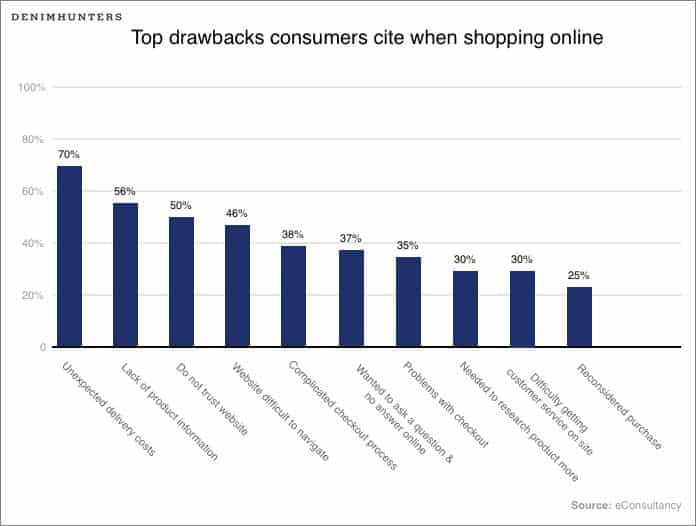
However, despite the seeming abundance of product information available online, it appears that online shops can fall short of making the most of the medium they sell through. One survey shows that the second most frequently cited drawback of buying online is a lack of product information available to the customer.
Online Shopping Means Convenience; Physical Shopping Means Experience
Ultimately, it is down to the retailer, or brand, to choose how much emphasis to place on making the website part of the customer experience. Information is certainly not missing from the Rivet and Hide online store.

Take a look at any product on their site, and you’ll notice that all the essential information is given alongside products: everything from a description of fit, the product origins and material, advice on how to care for the product and what to expect upon first wash!
Businesses like Rivet and Hide understand that the website plays a crucial initial step in the customer journey. For Danny and his staff, the website is not a competing revenue channel to the physical store:
A big percentage of them will have researched online before coming to the physical store. A lot of effort goes into the website and social media feeds and it does drive customers through the door on Windmill Street.”
That’s right; customers still go into stores to purchase because the personal touch goes a long way to bridge the gap between a prospective sale and closing the deal. When it comes to premium denim, I use personal touch literally, as well as metaphorically.

Customers want to feel the jeans. Even if the description on the site proclaims they’re slubby, it’s something you only truly appreciated when the material is in your hand. Jeans are tactile by nature: they are against our skin on a daily basis and ever changing. Part of their joy is how they feel. So it is only natural that, like in the case of Rivet and Hide, the website would drive footfall to their physical store.

For Danny at Rivet and Hide, the physical acts almost as an interactive, physical extension of the webshop:
When you retail the kind of brands we do it does complement the online operation. Being located in Central London helps too despite the high and increasing costs associated with that. Many customers will discover us online then visit whilst on a trip to London. Our brands develop the most unique fabrics and garments. Sometimes customers just need to see, feel and try them in person.”
The Line Between Physical and Digital Stores is Blurring
In my previous article, I talked about successful physical stores, regardless of whether they sell one or many brands, moving away from purely transactional models towards becoming ‘third places.’
Nowadays, where the sale occurs is becoming less relevant. Retailers can track customer activity online and, to a growing degree, whether that customer then comes into a store to complete their purchase.
There is a growing emphasis on the customer experience rather than just offering a product at the most attractive price. Doug Stephens believes that as consumers, “our expectations of physical stores are being re-calibrated by our experiences online.”
Successful retailers must focus on, “being able to deliver the product information and well-trained brand ambassadors necessary to make a confident decision,” he continues, “regardless of where the product eventually ships from.”
No two customers are alike: for some, the superior denim curated by Rivet and Hide means that they would only consider purchasing in store, where they have Danny and his team to consult and advise. Others might prefer to experience the goods in-store and then purchase online, at a time and a place of their choosing.
Retailers are evolving to blur the distinction between online and offline customer experiences. Much like how we move seamlessly between the physical world we live in and the inboxes and social media accounts through which we live digitally, as consumers we expect a seamless experience when it comes to shopping.

When you step inside the Rivet and Hide store in London, it’s clear that they know their denim. The customer experience is built upon a carefully curated product selection: only denim from the best mills graces the shop floor, and this attention to detail extends to the staff, who know their products intimately. They wear the products they sell, and even more, they espouse the lifestyle that Rivet and Hide promote so their advice is built upon personal experience.
The success of Rivet and Hide as a business and as a trusted name within the industry is built upon the foundations of a strong customer experience. For Danny, the online experience is of equal importance as that of the bricks-and-mortar store.
We have also invested a lot of time and money in the website,” he explains to me, “we offer a very user friendly, informative online shopping experience with great product images, ship our goods extremely fast and the average sale includes free worldwide shipping.”
Rivet and Hide, like other successful retailers that blur the lines between the digital and physical customer experience, ensure that the service they offer to customers is unified across all mediums.
We offer free chain stitch hemming on a Union Special,” Danny informs me, “we spend a lot of time engaging on line customers in emails to make sure they have chosen the right size and fit to minimize returns. This level of engagement is pretty unique.”
What Retailers Need to Do to Adapt
As we enter a ‘replenishment economy’ where products we use daily are ordered automatically online as we use them, e-commerce is set to take an increasing share of overall sales in certain. This prediction might not exactly be the case for businesses like Rivet and Hide, where the physical shopping experience, involving trying and touching the product before purchase, are crucial stages in the customer journey.
Regardless, online sales already are a significant revenue stream for many, if not most retailers. So where does that leave bricks-and-mortar stores? Is their time finally over as the digital becomes ever more pervasive in our lives? Doug Stephens doesn’t believe so:
Ultimately, I believe that we will buy the vast majority of things online,” he envisions, “stores will be places we go for education, inspiration and entertainment. The store will be a catalyst for the purchase, but the sale won’t happen within the four walls of the store.”
The successful retailer knows that an omni-channel approach, that is, a presence both online, in store and across social media is the most effective way in which to reach and engage the biggest possible target audience. In addition to this, the lines between each channel need to appear invisible. Customers want to experience the same level of service regardless of how they interact with the brands and retailers they shop at.
Retailers like Rivet and Hide are already paving the way for this level of retail experience, but the sooner more retailers adapt to this, the better.
Understanding that the foundations for outstanding customer experiences come from an engaged and well-trained staff is one thing. Implementing these changes is a whole other challenge! In my the next episode of the Future of Retail, I’ll look at how first-movers are utilising specialist training to set themselves a cut above their competition.
Get Exclusive Denim Training With Your Member Account
Continue your denim education with the Denimhunters Academy.
With your member account, you can access exclusive online training, as well as all the member resources like this one.
Start learning here!
(And remember, you’ll also get all the latest updates delivered straight to your email inbox!)
[/show_to]
Share

